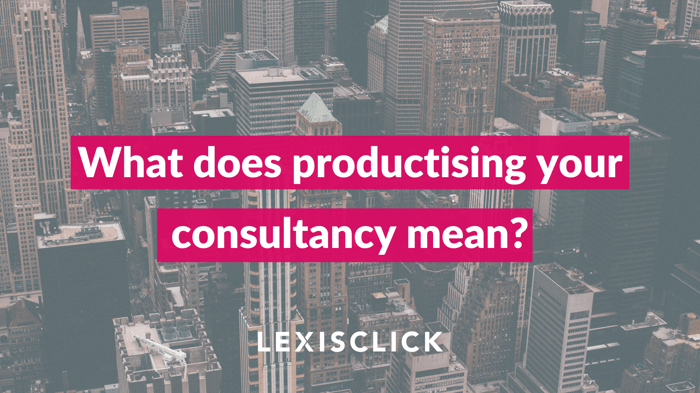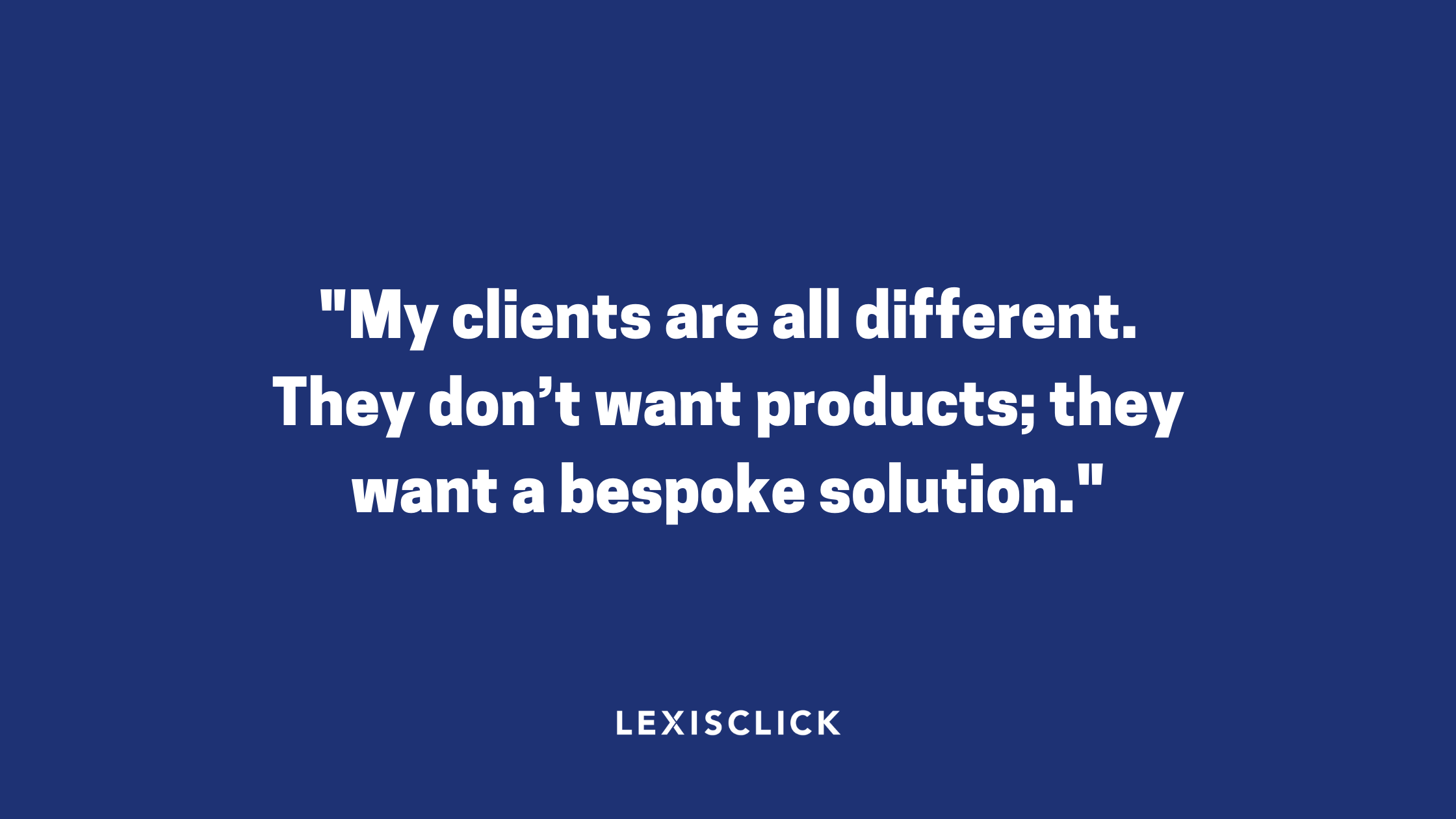
Do you want to grow your consultancy business without having to work in it 24/7? When you are ready to move on from your consultancy, do you want to sell it for an amount that would mean you never have to work again? Would you like your marketing and sales to provide a consistent flow of new business so that you can make sales while you sleep? If you want the answers to these questions, then I will show you what productising your consultancy means and how it can deliver on all of these promises when done correctly.
Forget the productisation you’ve been sold before
The chances are that if you’ve ever read about productising your consultancy before, you may have seen people in fancy offices, sitting on the front of a flash car or maybe standing next to a private jet, alluding to a lifestyle you could have. But, when you dig deeper, most of these people are selling you the concept of creating a course to teach people how to do what you do themselves.
It’s is true that some people have made life-changing sums from using this approach, but it isn’t what I mean by productising your consultancy. I’ve also found that while these approaches do work, many people buying into them don’t see a great return on their investment.
So I’m not going to be discussing making a course, setting up a mastermind or similar ways that you have seen promoted to productise your consultancy. Instead, I want to show you another way that I’ve found is much more aligned with the outcomes that most consultancies want to deliver for their clients.

Avoiding the time for money trap
The most common way for consultancies to price their services is by the time that it takes to deliver them. Whether you price by the hour or by the day, you are effectively pricing by the hour. There are many problems associated with using time for your pricing. However, the biggest issue is that it is restricting your ability to scale your consultancy. The answer to all the questions that I posed in the opening paragraph of this post is to make your consultancy scaleable. As soon as you have this ability to scale, you can grow without working all hours; your consultancy will be worth many times more than it is now, and you can build marketing and sales systems that deliver a consistent flow of new business.
When you are selling your expertise by the hour, you will be constantly trapped by working more hours to grow. The only answer to growing is to employ more people, and with this comes the complexities of managing these people. These complexities are compounded when you are selling expertise and ten different solutions to ten different problems. The most straightforward answer to solve this problem and escape the time for money trap is to productise your services.
Your customers buy the outcomes you deliver, not the time you take
A closely related problem that is very common when you sell your expertise priced by the time you take is that you forget that clients buy the outcomes you deliver, not your expertise and not the time you take to deliver the outcome.
The most significant problem when you price by the time you take is that you earn more when it takes longer to deliver the outcome with this model. This pricing model encourages you to forget that your clients are buying the outcome that you deliver. The more consistently and more efficiently you can deliver this outcome for them, the more valuable it is for your customers. When you can deliver the outcomes in minutes rather than days or even months, the more valuable it is to them. However, when you price by the time it takes to deliver the value, your brain finds it very difficult to compute that you provide higher value when you deliver in less time. You also train your clients to buy and value your services by the hour.
I want you to start by thinking about the outcomes you can deliver to your clients consistently and how you can deliver these outcomes more efficiently. Which would be the most valuable for your clients if you could deliver them much faster and more efficiently than you can now? When you start thinking in this way, you’ll understand how much more valuable it is for your client to buy outcomes and for you to sell them.
Your expertise is restricting your growth
In a similar way to selling your expertise by the time it takes, your expertise also restricts your consultancy’s growth. It is leading to many of the problems you are currently experiencing with it. If you find that you need to be involved in most of the sales, inputting into the marketing you produce and delivering the projects you take on, you are a victim of your expertise.
It is natural that as a human, your ego is very attached to the years you have invested in building your expertise, and the role of the ego is to maintain its survival. The issue is that your ego will want to prove your expertise by taking on more significant and more complex problems to solve. However, these problems are often not solvable at scale, meaning that you will need to heavily involved in their solving. The reality is that your expertise can have significantly more value in the world when it can be scaled, which will both serve the needs of your ego and your desire to build a consultancy where you don’t have to work 24/7 and is worth many times more when it comes time to sell.
When you focus your expertise on creating products that can deliver consistent outcomes at scale, your expertise becomes the seed to create much greater value.
How you can productise your consultancy
1) Identify the outcomes that you can consistently deliver
I have already shown you that your clients buy the outcomes you deliver and nothing else. As the first step to productising your consultancy, I want you to look at the outcomes that you can deliver consistently. At this stage, don’t worry about the details; just make a list of all the outcomes that you can deliver consistently.
If you are thinking of a service, what is the outcome associated with it? For example, you might provide tax advice; the associated outcome is saving money or having more money. Ideally, you can take this further to the future they desire from this outcome, such as buying what they want. Or if you sell website hosting and support, the outcome they desire is a website that is always available, the future they desire is consistently achieving their sales targets.
I recommend that you take the outcomes to the furthest point regarding what your clients ultimately want. Then, you can later choose which outcome they relate to best. I want you to take the outcome as far as possible to make the next step easier.
2)Who can you consistently deliver the outcome to?
Now that you have listed all of the outcomes you can consistently deliver and taken these to the furthest point look at who you can consistently deliver each outcome to.
I want you to work through your list and identify who you can consistently deliver this outcome for. Which of the outcomes that you have identified can you consistently deliver? For example, you may find that you can consistently deliver a highly valuable outcome for certain groups of people.
I want you to identify the most valuable outcomes you can deliver and the ones you will most enjoy delivering. When you enjoy delivering an outcome, you’ll be working in your sweet spot, and there is a solid chance that your passion for delivering this outcome will give you a never-ending supply of energy that will be clearly evident to your ideal clients.
3)Create your product
Creating a product can be much simpler than it appears on the surface. All you need to create a product is a consistent outcome, a transparent price and a name. When you have these and formalise them into a web page or a simple brochure, you have a product.
At this stage, this is all you need. I also recommend that before you invest in creating the web page or brochure for your product, you look at how you can simplify it further. Is the outcome you promise a package of smaller outcomes? If it is, which of these outcomes stand-alone and provide value to your clients in their own right? From my experience, when you start creating products, you expect that your customers will only buy more significant outcomes. When in reality, they are delighted to buy smaller and lower-priced outcomes, especially when they allow them to test you out before making a more considerable commitment to you.
Creating smaller products with smaller outcomes will allow you to create a light product that you can deliver consistently, with little to no additional overhead on your existing consultancy business. You will create a low-risk product for your clients to buy and for you to deliver. Too often, productisation fails because the products are too complicated, making them too difficult for clients to buy quickly and too long to deliver.
4) Test your product
When you have created a small product in the way that I have described above, you then need to test it in the market. As it has taken you little effort to create, if you find that it isn’t easy enough for your clients to buy, you can change it easily. You will have little attachment to it, as you have invested little time into it and can adjust it easily.
Just because it is easy to change, don’t be tempted to change your product for each client. Instead, be strict on what your product is and the outcome it delivers. If your clients want a different outcome, take their feedback and explain to them you are running tests and will come back to them later. When you are testing, you will see patterns in the feedback you receive. You can use this to refine your product or to design a new one. It is evident when you have the right product-market fit for your product, as people will buy it quickly, and they won’t want to give it up after they have bought it.
You can see from these steps that productising your consultancy is much simpler than many make it out to be. However, many consultancies that I discuss it with have objections to productising. Here are the three most common objections that I come across.
The most common objections to productising a consultancy service:

"My clients are all different. They don’t want products; they want a bespoke solution."
Many consultants object to productising because, to date, they have been offering bespoke solutions to their clients based on the specific needs of their clients. If you’re experiencing this objection, understand that it is closely related to the problem I described earlier of your expertise holding back your growth. When you provide ten different solutions to ten different problems, each one will require your expertise to deliver the solution, meaning that ultimately you will restrict the number of problems that your consultancy can solve.
When you look at the solutions you provide, I am sure that many of the elements will be consistent and arriving at the final solution will have involved at least several smaller outcomes. Also, you don’t have to productise all the parts of your consultancy. Just as the large fashion houses build highly scalable brands from products your average person can afford, they retain their bespoke collections for their very best customers. When you build scalable products, I assure you that you’ll enjoy the results you can deliver to your clients and for yourself from them.
"My clients buy my expertise"
When you productise your services, you are packaging your expertise to deliver it at scale. Like a leading chef creating a restaurant chain, they don’t cook in every restaurant. Instead, they oversee the quality of the food and restaurant experience so that many more people can enjoy the experience than if they limited themselves to cooking in a single restaurant.
Your clients are still buying your expertise, packaged to be delivered more efficiently and more consistently by others.
"I’ve tried productising my consultancy before, and it didn’t work"
I also tried productising my consultancy several times before I succeeded. The biggest mistake that I made when I failed was that I didn’t follow the steps I have outlined in this post. I didn’t start with the outcomes that I could consistently deliver. Instead, I started with the services that I wanted to deliver. Unfortunately, starting with the service meant I didn’t identify the ideal customers that I could consistently deliver this outcome for and who would value it the most highly. Finally, I created products that were quite complex, with complex supporting processes and systems. This complexity meant that I didn’t test the products fast enough and learn the changes I needed to make. Instead, I gave up on them and wasted the time I had invested.


